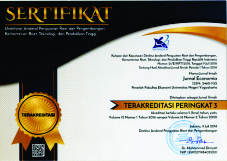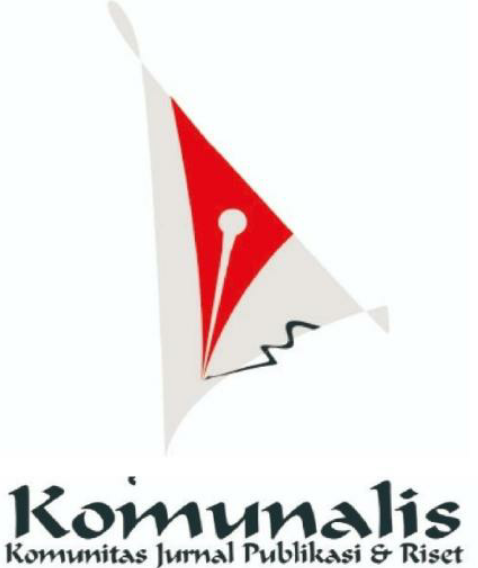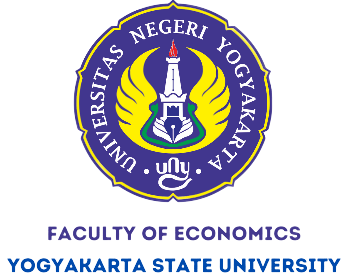Application of Technology Acceptance Model (TAM) on Computerized Land Activities
Downloads
Abstract: Application of Technology Acceptance Model (TAM) on Computerized Land Activities. The purpose of this study was to examine and analyze the effect of the Technology Acceptance Model (TAM) on computerized land activities. A survey methodology used to collect data of 100 employees. The results indicated that (1) Computer self-efficacy affected the perceived ease of use and usefulness of the technology, (2) the perceived ease of use technology affected of perceived usefulness and attitude towards using technology, (3) the perceived usefulness affected attitude towards using technology, and (4) the attitude to use technology affected intention to use technology.
Keywords: Technology Acceptance Model (TAM), computer self-efficacy, perceived usefulness, attitude to use technology, intention to use technology
Abstrak: Aplikasi Technology Acceptance Model (TAM) Pada Komputerisasi Kegiatan Pertanahan. Tujuan penelitian ini adalah untuk menguji dan menganalisis pengaruh Technology Acceptance Model (TAM) Pada Komputerisasi Kegiatan Pertanahan. Sebuah metodologi survey digunakan untuk mengumpulkan data 100 karyawan. Path analysis menunjukkan bahwa (1) Computer self-efficacy berpengaruh pada persepsi kemudahan penggunaan dan persepsi manfaat teknologi, (2) Persepsi kemudahan penggunaan teknologi berpengaruh pada persepsi manfaat dan sikap untuk menggunakan teknologi, (3) Persepsi manfaat teknologi berpengaruh pada sikap dalam menggunakan teknologi, dan (4) Sikap untuk menggunakan teknologi berpengaruh pada niat untuk menggunakan teknologi.
Kata kunci: Technology Acceptance Model (TAM), computer self-efficacy, persepsi manfaat teknologi, sikap menggunakan teknologi, niat menggunakan teknologi
Downloads
Abramson, J., Dawson, M., Stevens, J. (2015). An Examination of the Prior Use of E-Learning Within an Extended Technology Acceptance Model and the Factors That Influence the Behavioral Intention of Users to Use M-Learning. Sage Open, hal. 1-9.
Ajzen, I. (2005). Attitude, Personality and Behavior. New York: Open University Press
Bandura, A. (1977). Self-Efficacy: Toward A Unifying Theory of Behavioral Change. Psychological Review, 84(2), 191-215.
Dachlan, U. (2014). Panduan lengkap Structural Equation Modeling Tingkat Dasar. Semarang: Lentera Ilmu.
Davis, F.D. (1989). Perceived Usefulness, Perceived Ease Of Use And User Acceptance Of Information Technology. MIS Quarterly, 13(3), 319-340.
Davis, F.D., Bagozzi, R.P., & Warshaw, P.R. (1989). User Acceptance Of Computer Technology: A Comparison Of Two Theoretical Models. Management Science, 35(8), 982-1003.
Ferdinand, A. (2006). Structural Equation Modeling Dalam Penelitian Manajemen. Semarang: Badan Penerbit Universitas Diponegoro.
Fishbein, M. and Ajzen, I. (1975), Belief, Attitude, Intention and Behavior: An Introduction to Theory and Research, Addison-Wesley, Reading, MA.
Ghozali, I. (2008). Model Persamaan Struktural Konsep dan Aplikasi Dengan Program Amos 16.0. Semarang: Badan Penerbit Universitas Diponegoro.
Hu, P.J., Chau, P.Y.K., Sheng, O.R.L, Tam, K.Y. (1999). Examining the Technology Acceptance Model Using Physician Acceptance of Telemedicine Technology. Journal of Management information Systems, 16(2), 91-112.
Instruksi Presiden Republik Indonesia Nomor 3 Tahun 2003 Tentang Kebijakan Dan Strategi Nasional Pengembangan E-Government.
Lin, J dan Chang, H. (2011). The Role Of Technology Readiness In Self-Service Technology Acceptance. Managing Service Quality: An International Journal, 21(4), 424 – 444.
Park, S.Y. (2009). An Analysis of the Technology Acceptance Model In Understanding University Students Behavioral Intention to Use e-Learning. Educational Technology & Society, 12(3), 150–162.
Peraturan Menteri Pendayagunaan Aparatur Negara dan Reformasi Birokrasi Nomor 16 Tahun 2014 Tentang Pedoman Survei Kepuasan Masyarakat Terhadap Penyelenggaraan pelayanan Publik.
Priyanka, S dan Kumar, A. (2013). Understanding The Evolution of Technology Acceptance Model. International Journal of Advance Research in Computer Science and Management Studies, 1(6), 144-148.
Rose, J dan Fogarty, G. (2006). Determinants Of Perceived Usefulness and Perceived Ease Of Use In The Technology Acceptance Model: Senior Consumers Adoption Of Self-Servive Banking Technologies. Academy of World Business, Marketing & Management Development, 2(10), 122-129.
Suara Ombudsman. (2008). Kerjasama Komisi Ombudsman Nasional dan Badan Pertanahan Nasional dalam rangka Peningkatan Kualitas Penanganan Keluhan Bidang Pertanahan. Artikel. ISSN: 1412 – 3932.
Sugiyono. (2010). Metode Penelitian Bisnis. Bandung: Alfabeta.
Suki, N.M dan Suki, N.M. (2011). Exploring The Relationship Between Perceived Usefulness, Perceived Easy Of Use, Perceived Enjoyment, Attitude And Subscribers Intention Towards Using 3G Mobile Services. Journal of Information Technology Management, 22(1), 1-7.
Surat Edaran Nomor 5/SE-100/I/2015 Tentang Penggunaan Aplikasi Komputerisasi Kegiatan Pertanahan
Teo, T., Luan, W.S., Sing, C. C. (2008). A Cross-Cultural Examination Of The Intention To Use Technology Between Singaporean and Malaysian Pre-Service Teachers: An Application Of The Technology Acceptance Model (TAM). Educational Technology & Society, 11(4), 265–280.
Undang-undang Republik Indonesia Nomor 25 Tahun 2009 Tentang Pelayanan Publik.
Venkatesh, V. (2000). Determinants of Perceived Ease of Use: Integrating Control, Intrinsic Motivation, and Emotion into the Technology Acceptance Model. Information System Research, 11(4), 342-365.
Yusoff, Y.M., Muhammad, Z., Pasah, E.S.E., Robert, E. (2009). Individual Differences, Perceived Ease of Use, and Perceived Usefulness in the E-Library Usage. Computer and Information Science, Vol. 2(1), 76-83.















